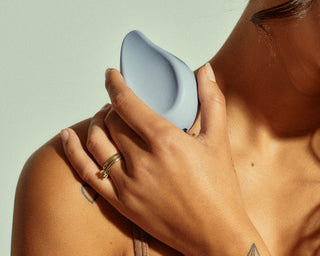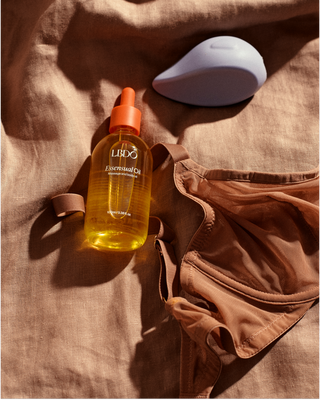The origin story of the vibrator has been retold repeatedly in TV shows, plays, documentaries and films over the past two decades. However, the narrative we’ve come to know might not actually be true.
The tale begins in the 19th century when doctors treated women for “hysteria.” For thousands of years, hysteria was understood as a disease afflicting women, encompassing a myriad of mental and physical symptoms. It wasn't officially dropped from the medical profession until 1952. Some now argue that hysteria, which led to the institutionalisation of many women, often sounded like ordinary sexual frustration—erotic fantasies, sleeplessness, and abdominal discomfort among the symptoms.
During the Victorian era, women were discouraged from masturbation, and many did not experience orgasm during penetrative sex with their husbands. It’s not surprising, then, that doctors found relief for their hysterical patients through manual stimulation, leading to what was termed “hysterical paroxysm”—or, in layman's terms, orgasm.
The vibrator was supposedly invented to reduce the time and effort required for doctors to relieve women’s distress. This innovation allowed physicians to treat more patients in less time and, consequently, increase their earnings.
This version of history first emerged in 1998 with Rachel Maines' book The Technology of Orgasm. In it, she cited various 19th-century sources claiming that doctors used vibrators on women’s clitorises to treat hysteria. Naturally, a vibrator was deemed more efficient than the laborious practice of manual stimulation.
This provocative revelation quickly gained traction in popular culture and went largely unchallenged in academic circles until a few years ago.
Sex historian Hallie Lieberman debunked Maines’ research in her 2017 book Buzz: The Stimulating History of the Sex Toy. When that didn’t put an end to the myth, Lieberman co-authored an academic article asserting that genital massage was never a widespread treatment for hysteria and that vibrators were not invented to mechanise this practice. She found “not one shred of evidence” in Maines’ sources that physicians used vibrators for genital massage.
Maines later clarified that The Technology of Orgasm was intended to present one “hypothesis,” expressing surprise at how long it took for people to question her “slender” evidence. Nevertheless, her theory has embedded itself as fact in Western culture.
So, what’s the real history of the vibrator? Let’s rely on Lieberman’s meticulous research as we uncover the trajectory of sex toys.
Lieberman notes that English physician Joseph Mortimer Granville did indeed invent the electromechanical vibrator in the 1880s, but not for hysteria or genital massage. Doctors primarily used vibrators for the medical treatment of pain and disease. While some individuals likely used vibrators for sexual pleasure from the outset, this remains difficult to prove.
By the early 20th century, vibrators became widespread in mainstream America, largely because their sexual uses were concealed. Advertisements for vibrators marketed them as scalp and body massagers, muscle builders, or even treatments for deafness and disease, subtly hinting at their sexual potential. In contrast, dildos were often confiscated under obscenity laws, while vibrators with dildo-like attachments evaded prosecution.
It wasn’t until the late 1960s that the vibrator’s role in masturbation was explicitly acknowledged, although it continued to be sold for nonsexual purposes. (Hitachi only admitted in 2013 that their Magic Wand had sexual uses.)
Pioneering pro-masturbation feminist Betty Dodson began leading her Bodysex workshops in New York in the late 1960s. In these sessions, she gathered women together, handed out Hitachi wands, and taught them how to embrace their own pleasure. Second-wave feminists had mixed feelings about vibrators and their place in the movement, but Dodson believed that masturbation and sexual freedom were essential to women’s liberation. She continued to hold workshops until her passing in October at the age of 91.
Dell Williams was so inspired after attending one of Dodson’s early Bodysex workshops that she founded America’s first feminist sex-toy store, Eve’s Garden, in 1970.
The feminist movement didn’t entirely dismantle the stigma surrounding the vibrator. This sex toy has continued to evolve, often navigating around obscenity laws and cultural stigma globally.
One of the most popular models, the Rabbit, was invented in Japan in the 1980s to circumvent laws banning penis-shaped objects. These vibrators mimicked children’s toys to enter the market. Sales of the Rabbit exploded when it became a pop culture sensation in America in 1998 after an episode of Sex and the City featured Charlotte’s obsession with hers.
Despite the rise of women’s interest in vibrators, traditional sex shops primarily marketed sex toys to men to buy for their female partners, often depicting women in stereotypically objectified poses on their packaging. Realistic dildos dominated the market. In a 2001 Australian documentary Turn Me On: The History of the Vibrator, Fiona Patten, founder of the Reason political party (then a sex toy internet retailer), remarked how men would enter sex shops and request vibrators that “looked like them.” In contrast, women buying vibrators for themselves preferred products that complemented their bedroom décor, desiring items with pearls and textures that felt good.
Throughout the 2000s, sex toys began to take on more adventurous, non-phallic shapes like tongues and eggs. With greater consumption came increased awareness about vibrator safety. In 2019, the International Standardisation Authority announced it would develop official standards for sex toy design and safety.
The history of the vibrator is complicated and sometimes difficult to decipher due to its sexual function being camouflaged for so long. Given that sex retailers still offer discreet packaging, safe-for-work names on receipts, and take our sex toys to the tip for us, we’re probably not as liberated as Betty Dodson might have hoped we would be by now.
However, with increasing visibility and awareness, we’re improving the vibrator—and hopefully the potential for everyone’s pleasure, too.
The story of the vibrator is not just about a tool for pleasure; it reflects broader societal attitudes toward female sexuality and empowerment. As we continue to challenge outdated narratives and embrace the complexities of sexual pleasure, the vibrator stands as a symbol of that evolution. By understanding its history, we can appreciate the strides we've made and the work that still lies ahead in fostering an inclusive conversation about sexual wellness.












